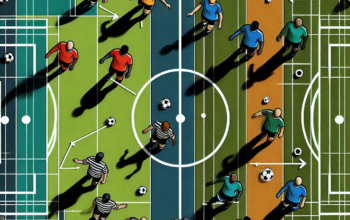Injury Report: Key Players Missing Time
In the competitive world of professional sports, injuries can significantly alter the landscape of a team’s season. Fans, coaches, and analysts anxiously monitor the injury report to determine which key players will miss valuable game time. As we delve into the injury report of 2025, it’s vital to recognize the impact these absences have on team dynamics, performance, and the championship race. This article will explore pivotal injuries across various leagues, their implications, and how teams and players adapt to these challenging scenarios.
Understanding the Impact of Injuries on Sports Teams
Injuries can have profound effects on professional sports teams, often leading to shifts in strategies and player utilization. When key players are sidelined, especially stars who are central to the team’s performance, the repercussions can be immediate and far-reaching. It is not just the absence of a single player; the ripple effects can influence game plans, team morale, and even the likelihood of success in specific matchups. Teams must adapt their strategies to compensate for missing talent, often utilizing depth players who may not have had significant roles in recent games.
Moreover, the psychological aspect of injuries cannot be overlooked. Teams missing their top players often face increased pressure to perform, which can lead to anxiety and mistakes on the field. Replacing high-caliber players can sometimes inspire other team members to elevate their performance, but there’s also a real risk of diminishing returns as substitutes may not be able to match the lost productivity. Understanding these dynamics is crucial for teams as they navigate through the season with their injury reports.
Major Injuries in the NFL: Week 7 of 2025
As the NFL season progresses into Week 7, several key players have found themselves on the injury report, impacting their teams significantly. Quarterback injuries, often the most consequential, can derail entire seasons. For example, the Chicago Bears have had to navigate the absence of superstar quarterback Justin Fields, who is recovering from a hamstring injury. Fields had been on a transformative run, leading the Bears to a strong start with his dynamic playmaking ability. As a result of his absence, the team now relies heavily on backup players who may struggle with the complexities of the starting role.
In addition to quarterback injuries, defensive casualties are equally impactful. The Dallas Cowboys have been holding their breath following the injury to standout linebacker Micah Parsons, who is out with a knee injury. Parsons is not only crucial for the Cowboys’ defensive schemes but also plays a pivotal role in rallying team spirit. His absence can lead to vulnerabilities in the defense, as opposing teams may exploit gaps in the Dallas lineup. Monitoring the recovery timelines for these star players is essential for fans and fantasy players alike, as they can influence game outcomes and team standings.
NBA Injuries That Change the Game
The NBA injury report has also witnessed significant names sidelined as the season heats up. As of late January 2025, superstar players like LeBron James and Giannis Antetokounmpo have suffered injuries that could considerably impact their respective teams. LeBron is sidelined with a groin strain, which may appear minor, but his age and the history of similar injuries suggest it could linger longer than expected. His leadership and scoring ability are vital for the Los Angeles Lakers, and without him, the team faces the daunting task of maintaining their playoff position against fierce competition.
Giannis, a two-time MVP, is currently out with an ankle sprain. The Milwaukee Bucks have relied heavily on him for scoring, rebounding, and defensive versatility. His absence shifts the team’s dynamics, as players step up to fill the void, thereby changing the offensive schemes and defensive assignments. Teams that lose their stars must dig deep into their rotations, often giving younger players a chance to shine. However, they must also manage the risk of overexerting remaining stars who might push their limits to fill the gaps left by injured teammates.
The Impact of Injuries on Fantasy Sports
For fantasy sports enthusiasts, the injury report is a critical tool in navigating team selections each week. The value of players fluctuates not only based on their on-field performance but also on the potential for injury. As top performers go down, those who step up as their replacements can become highly sought-after assets. For instance, the Chicago Bulls benefitted greatly when their young guard stepped into a starting role during a period of injury for star players. Such opportunities can lead to breakout performances, making it vital for fantasy managers to stay updated on injury reports to capitalize on these shifts.
Additionally, injuries can create a ripple effect impacting lineup construction and trading strategies in fantasy leagues. Players linked to those hurt often see their value change dramatically. For example, the loss of a leading point guard might elevate the value of players on the wing who can pick up some of the assist and scoring load. Monitoring the injury report gives fantasy players an edge, allowing them to make informed decisions on acquisitions, trades, and starts in their weekly lineups.
Adapting to Injuries: The Role of Coaching and Strategy
When key players go down, coaching staff must make swift adaptations to maintain competitive performance. This often includes re-evaluating game plans, optimizing player rotations, and fostering resilience within the roster. Coaches are challenged to draw on the full capabilities of their bench, crafting game strategies that maximize the strengths of their remaining players. For example, a defensively-oriented team might adjust to a more offensive strategy if their star defensive player is injured, shifting how they play to leverage the talents of other contributors.
Team cohesion also becomes paramount during these challenging periods. Players often must rally around one another, boosting team morale and maintaining commitment to the team objectives. Coaching staff may implement additional bonding activities, fostering a united front against adversity. This camaraderie is vital to a team’s success, as it can help in sustaining motivation and performance levels when faced with stiff competition while overcoming the challenges of managing injuries.
Future Trends in Injury Management
As sports science advances, teams are increasingly employing innovative strategies to manage injuries. In 2025, recovery protocols involve sophisticated monitoring systems that track player biomechanics, fatigue levels, and recovery metrics. This data-driven approach helps coaching staff make informed decisions on training loads and game readiness, ultimately reducing the risk of injury. Many teams now utilize artificial intelligence and machine learning algorithms to predict potential injuries based on historical data and player performance patterns.
Additionally, the integration of wearable technology in injury management has become prominent. Devices that monitor heart rates, sweat levels, and other physiological metrics provide real-time feedback to coaches and medical staff. This technology enables early identification of fatigue and distress signals, allowing for proactive interventions before injuries occur. The future of injury management not only focuses on recovery but preventive measures, enabling players to stay healthy, both physically and mentally.
Conclusion
The injury report remains an essential aspect of professional sports, profoundly influencing team dynamics and individual performances in 2025. As key players navigate through injuries, their teams must adapt, demonstrating resilience and strategic ingenuity. From the NFL to the NBA, the implications of these injuries are undeniable, impacting everything from game plans to fantasy sports decisions. Coaches, players, and fans alike must stay informed on injury trends, as they centralize around the ongoing quest for championship glory. The growing emphasis on advanced analytics, technology, and proactive management strategies offers hope for a future where injuries may be managed even more effectively.
FAQs
What are the most common injuries faced by professional athletes?
The most common injuries include sprains, strains, fractures, and concussions. These can vary by sport, with some injuries being more prevalent in certain leagues, such as ankle sprains in basketball and concussion protocols in football.
How do teams prepare for the absence of key players due to injuries?
Teams prepare by adjusting strategies, expanding player rotations, and fostering unity among remaining players. Coaches may modify their playbooks to make optimal use of the talents available, while also finding new roles for bench players.
What technology is being used to prevent injuries in athletes?
Teams are increasingly using wearable technology and data analytics to monitor player health, fatigue, and biomechanics. This proactive approach can help predict injuries and manage player workloads to minimize risks.
How can fantasy sports players benefit from injury reports?
Injury reports are crucial for fantasy players as they inform decisions on trades, starting lineups, and player acquisitions. Knowing a player’s injury status can help fantasy managers make strategic choices to maximize their team’s performance.
What is the impact of injury on team morale?
Injuries can significantly affect team morale, as players may feel pressured to step up in the absence of key teammates. However, overcoming these challenges often fosters stronger bonds and a collective resilience within the team.






